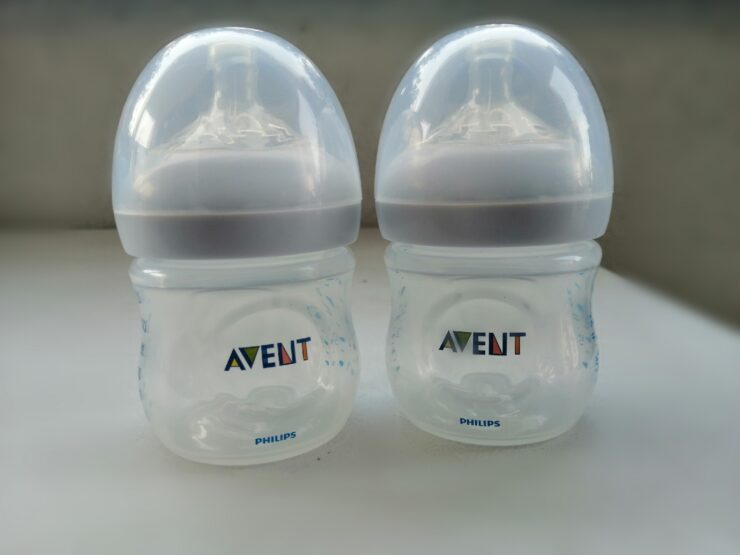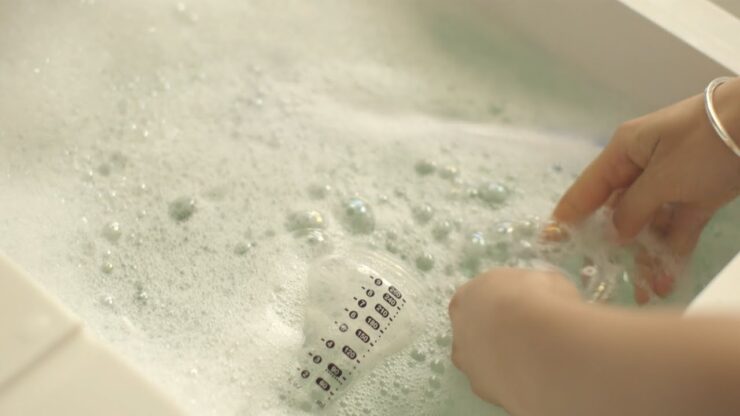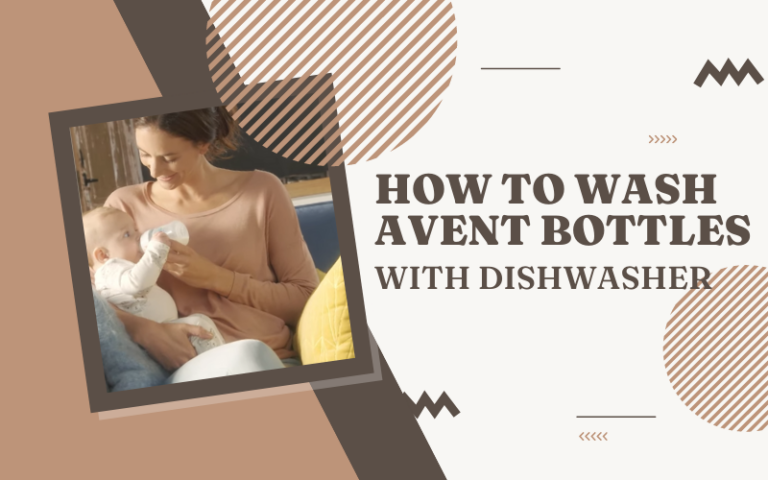Are Avent bottles dishwasher safe? Should you be worried when using one? A simple answer will be that they’re dishwasher safe. But there is more to consider when it comes to using and cleaning Avent baby bottles.
In this article, you’ll further learn whether they’re safe to use and how to keep the bottles hygienic. For your baby, this is important.
Newborns and Infants have an underdeveloped immune system. And are susceptible to infections by bacteria, viruses, fungi, and parasites which could all lead to disease conditions.
These germs can grow rapidly if formula or breast milk is added to a used bottle that hasn’t been properly cleaned.
Regardless of whether you choose to sterilize your Avent baby bottles, it is still necessary to thoroughly clean them after every feeding.
The Philip Avent bottles feature an anti-colic system. And most times, they come with only a few parts. This makes them easy to clean and sterilize, unlike other anti-colic bottles.
The Anti-colic bottle nipple has a unique valve that flexes to keep the air in the bottle. It also helps in keeping it out of the baby’s tummy.
Furthermore, this feature is said to reduce fussing and colic discomfort.
The soft rounded Anti-colic bottle nipples are made of last longing, dishwasher-safe silicone. This material is odorless, flavorless and resists stickiness and discoloring.
The starter pack is also equipped with a bottle brush designed for use on the nipples of the bottles.
Washing Before Feeding

Washing Avent baby bottles with soap and hot water are all that’s needed to remove harmful germs from bottles.
The Avent bottles are dishwasher safe and can be sterilized by boiling or using the Philips Avent steam sterilizer. You can also decide to effectively wash Avent bottles and their parts by dishwasher or by hand.
Sanitizing baby feeding items each day may not be required for older, healthy babies, as long as bottles and equipment are carefully cleaned after each use.
But what if your baby is younger than 3 months? Or has a weakened immune system? Or was born prematurely? In any of these cases, sterilizing can provide the necessary extra protection from harmful germs.
After Feeding
It is best to wash your Avent baby bottles immediately after feeding your baby.
If you have plans to wash your baby bottles at a later time, it is essential to at least properly rinse each bottle to get rid of any formula or milk residue.
This will prevent the milk from getting dried and hardened which could make it very difficult to remove.
Instead of rinsing, you can also put used baby bottles in the refrigerator until you are ready to clean them.
Rinsing your baby’s bottles is an important step in ensuring baby feeding safety whether you choose to wash them in a dishwasher or by hand.
How to Wash Avent Bottles with Dishwasher
Avent Bottles are dishwasher safe and can be washed by using your dishwasher’s hottest water setting and a heated drying cycle to effectively sterilize the bottles.
Here’s how:
- Separate the bottle into as many parts as possible. By washing the nipple, bottle and lid separately you will be assured of not missing any dried milk particles that may be stuck in them.
- Thoroughly rinse the bottles and parts with clean water in order to remove any milk particles.
- Put all small parts of the bottle such as nipples, rings, and valves in a dishwasher-safe basket to hinder from falling to the bottom of the dishwasher.
- When possible, select the sanitizing setting or run the bottles on a hot-water cycle and heated longest drying cycle. Make sure you put the bottles on the top rack, away from the heat source and they should be positioned face down.
- Take out the bottles and parts from the dishwasher using clean tongs and leave to air dry on a neat dishcloth.
How to Clean Avent Bottles by hand

When sanitizing by hand, it is important that you wash the Avent bottles and their parts in a special container. This should be one that you use for washing bottles only.
Rather than letting bottles come in contact with the sink which could cause cross-contamination.
Also, it’s better to use a bottle brush. Or other cleaning utensils that you only use for your baby’s bottles.
- Make sure you wash hands thoroughly. It should be clean when you start
- Separate the bottles and their parts and rinse each piece under running cold or hot water to get rid of any milk particles. Do not place the bottles down in the sink.
- Fill a clean bowl with soap and hot water.
- Wash the bottles and parts with a bottle brush, making sure to properly clean all the way to the bottom of the bottle.
- Wash inside the nipples making sure to run hot water through the tiny holes at the tips.
- Rinse again under running water.
- Leave to air dry on a neat dishcloth.
Are Avent Bottles Dishwasher Safe?
Yes, Avent bottles are dishwasher safe. In fact, they’re safe for your baby to use. And thousands of parents use them all year.
If you’re a mother, you’ll probably be worried about the products you use for your baby. That’s totally okay.
There are a lot of products that don’t pass this test. They’re not dishwasher safe.
One thing to note is that that doesn’t mean those products are bad. It just means that you won’t be able to wash them in the dishwasher.
This can add more to your already filled up schedule. So, if that’s very important for you, you look for only products that have the feature.
Fortunately, the Avent baby bottles fall into the second category.
What Else Should You Be Concerned About?
Many companies don’t really care what they use in making the products. They’re after the profit. And there have been dozens of cases of health hazards occurring as a result of that.
Fortunately, there are a lot of other companies out there still doing great. Philips Avent is one of them. Not only are they popular, but they make high-quality products too.
This is important to look at when selecting a baby product. Especially when it involves your baby’s food. From the research I’ve conducted, they’re products are generally safe for use.

